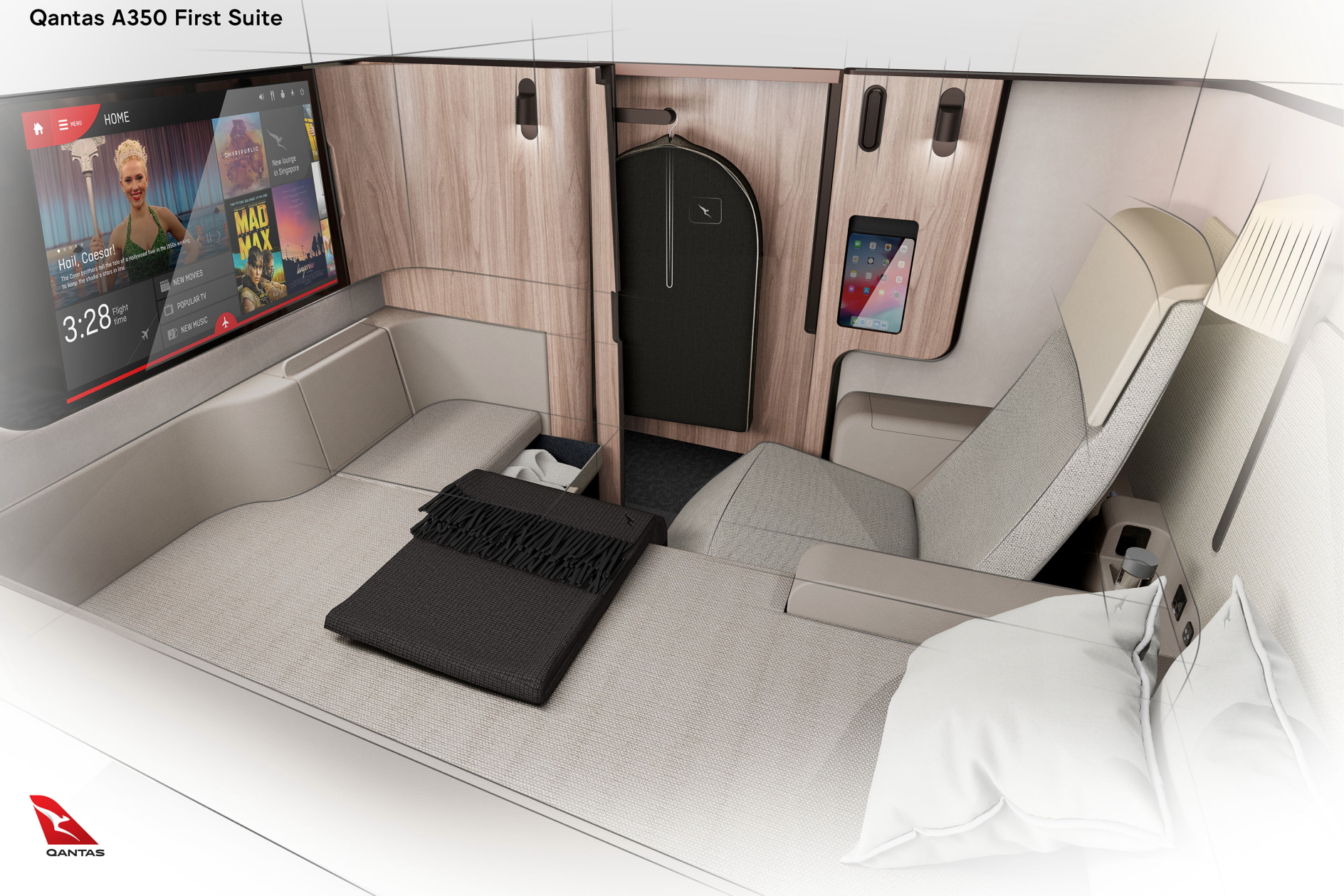|
(03 May 2022, 12:13 +07)
Qantas has ordered 20 Airbus A321XLRs and 20
A220-300s as part of its �Project Winton� domestic fleet renewal.
The first of the A220s are scheduled for delivery
in late-2023, with the order including purchase right options for
another 94 aircraft for delivery through to at least 2034.
Deliveries of the A321XLRs are slated to commence
in late-2024.
The aircraft will replace Qantas� fleet of 95
Boeing 737 and Boeing 717 aircraft which are gradually being
retired.
Qantas� A321XLR is five metres longer than the
outgoing 737s and will be configured to seat 200 people (20
business, 180 economy) � a 15 per cent increase with no reduction
in space between seats. The aircraft can fly approximately 3,000km
further than the 737 (at 8,700km) and opens up a wider range of
direct domestic and short haul international routes, such as
within South
East Asia and Pacific islands.

Qantas aims to redefine First Class and long-haul travel with the A350-1000
The A220-300 is larger overall than the outgoing
717s and will be configured to seat 137 people (10 in Business,
127 in Economy) � a 25 per cent increase with no reduction in
space between seats. The aircraft has almost double the range at
over 6,000 kilometres, meaning it can fly between any city in
Australia.
Both aircraft types will be powered by Pratt &
Whitney Geared Turbo Fan engines (PW1100G-JM and PW1500G), and
have noise levels that are up to 50 per cent lower than the
retiring aircraft.
On a per seat basis, the A220-300 burns 28 per
cent less fuel per passenger than the 717, while the A321XLR burns
17 per cent less fuel per passenger compared with the 737.
Internationally, Qantas has chosen to order 12
Airbus A350-1000s, powered by Rolls-Royce Trent XWB-97 turbofan
engines, to operate non-stop �Project Sunrise� flights from
Australia to cities such as New York and London.
Deliveries are scheduled to begin in 2025 and be
completed by 2028.
The Qantas A350-1000 will carry 238 passengers
across four classes (First, Business, Premium Economy, Economy),
with more than 40 per cent of the cabin dedicated to premium
seating. The aircraft will also feature what the airline has
called a �wellbeing zone� in the centre.
�New types of aircraft make new things possible,�
said Alan Joyce, Qantas Group CEO. �Throughout our history,
the aircraft we�ve flown have defined the era we�re in. The 707
introduced the jet age, the 747 democratised travel and the A380
brought a completely new level of comfort. The A350 and Project
Sunrise will make any city just one flight away from Australia.
It�s the last frontier and the final fix for the tyranny of
distance. As you�d expect, the cabin is being specially designed
for maximum comfort in all classes for long-haul flying.�
These latest orders combines with the existing
order of 109 A320s (plus purchase rights) for Jetstar into a
single Qantas Group narrow body order of 299 aircraft (half of
which are firm orders and half are purchase right options), with
the flexibility to draw down on that order by choosing any variant
from the A320 and A220 families.
This flexibility enables Jetstar to convert 20 of
its existing A320 family order to A321XLRs, which have the
potential to fly short haul international routes, with delivery to
start in the second half of calendar 2024. The first tranche from
this existing order � 18 A321LRs � are due to arrive from July
2022 onwards.
�The A320s and A220s will become the backbone of
our domestic fleet for the next 20 years, helping to keep this
country moving. Their range and economics will make new direct
routes possible, including serving regional cities better,� added
Mr. Joyce. �These newer aircraft and engines will reduce emissions
by at least 15 per cent if running on fossil fuels, and
significantly better when run on Sustainable Aviation Fuel. This
order brings us closer to our commitment to reach net zero
emissions by 2050. Project Sunrise will be carbon neutral from day
one. We have come through the other side of the pandemic a
structurally different company. Our domestic market share is
higher and the demand for direct international flights is even
stronger than it was before COVID. The business case for Project
Sunrise has an internal rate of return in the mid-teens.�
See also:
Qantas Launches New Distribution Platform in UK, US and South
Africa.
|
Headlines: |
|
|
